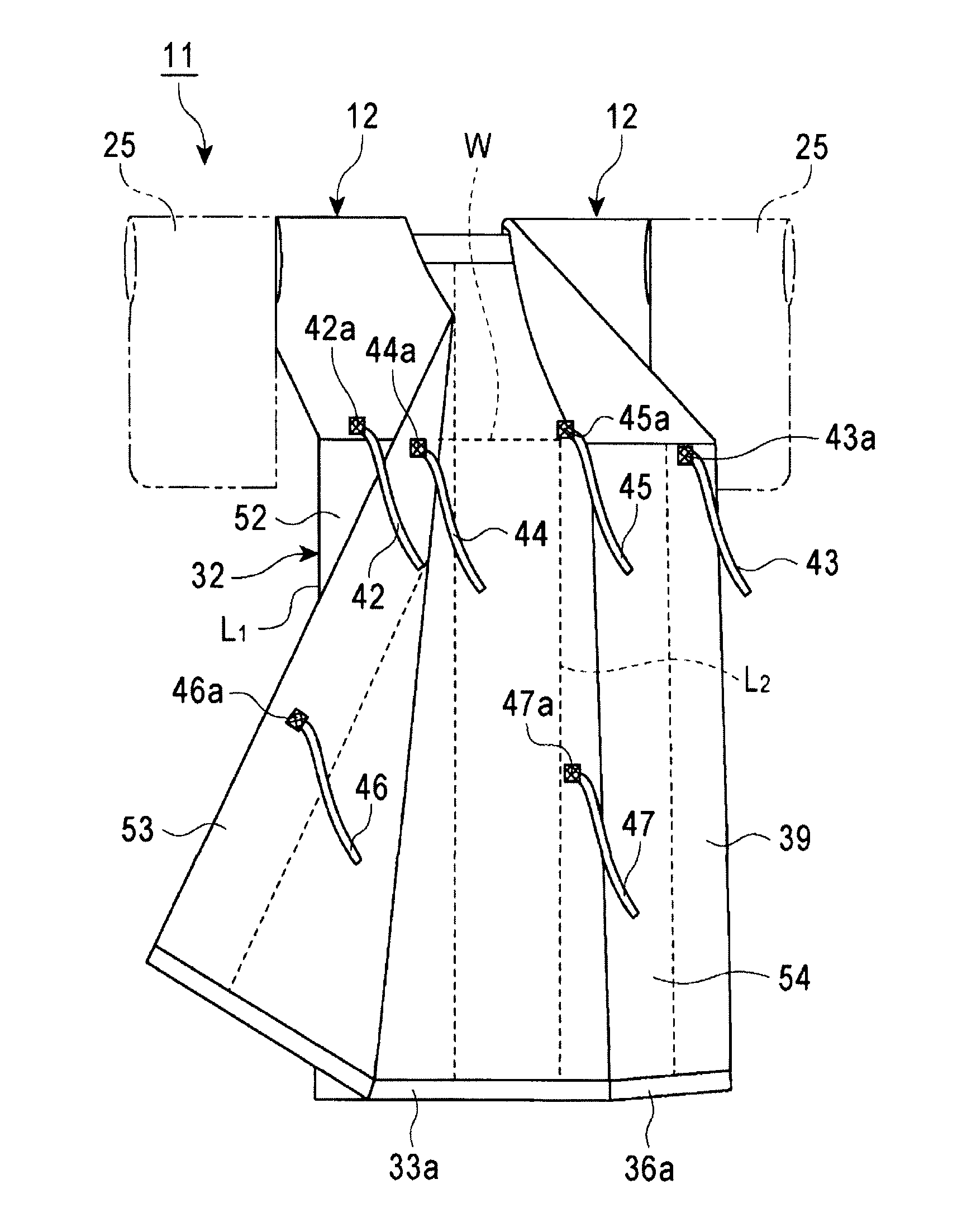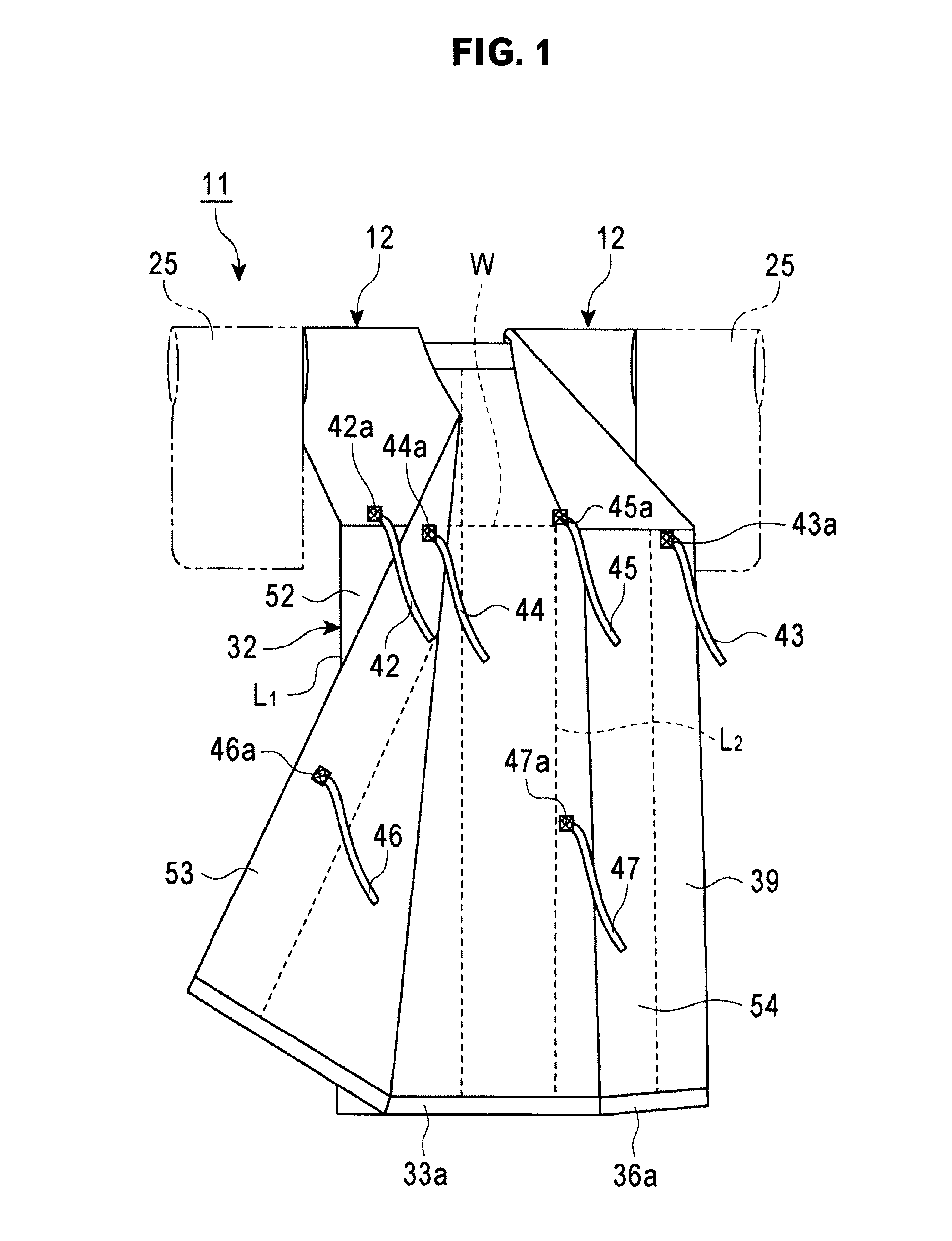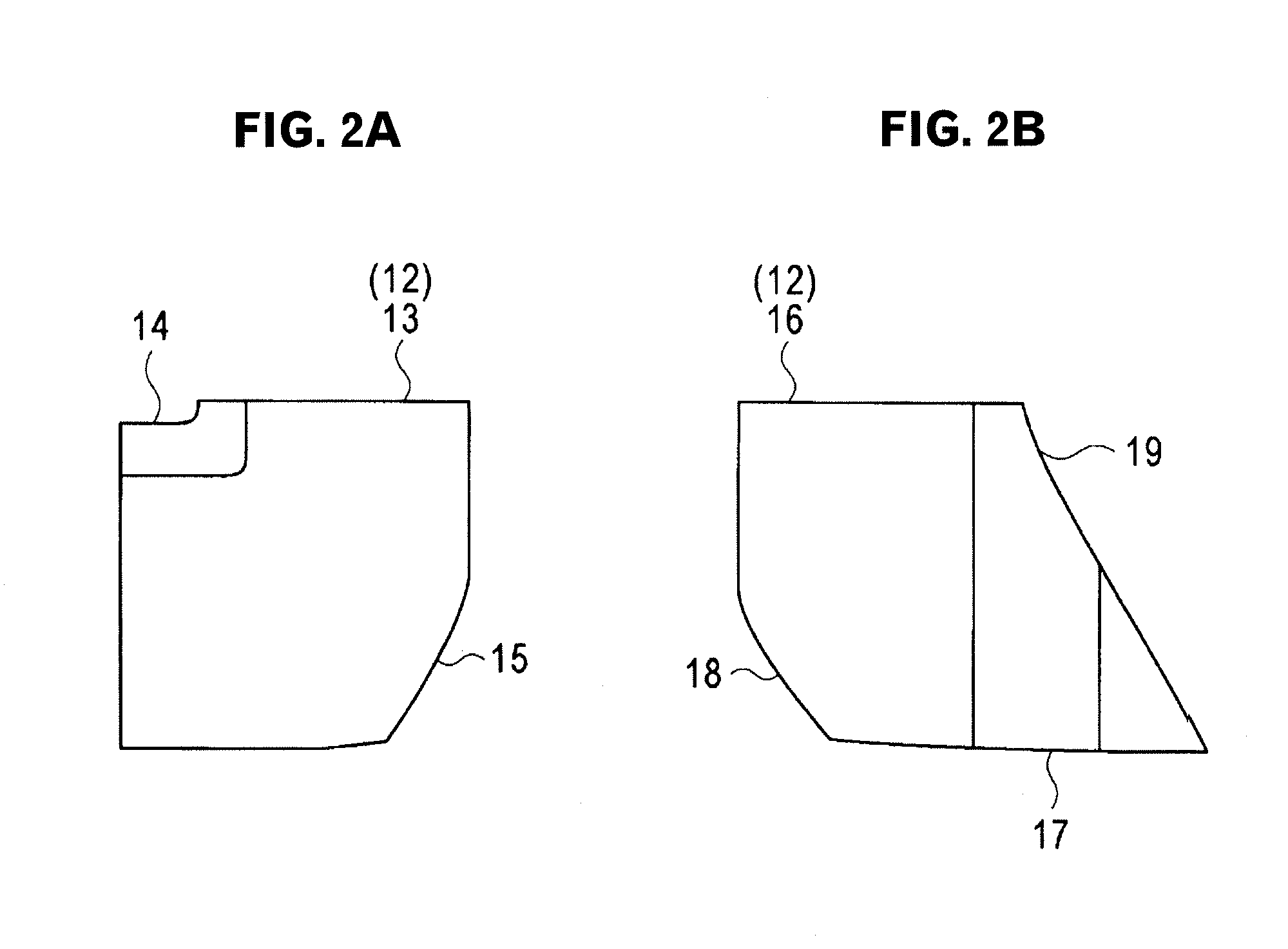Japanese dress
a full-length, japanese technology, applied in the direction of nightdresses, pyjamas, protective garments, etc., can solve the problems of hair and dressing working time, cost, and neck itself being hidden by the neckband, so as to achieve the effect of wearing the dress easily
- Summary
- Abstract
- Description
- Claims
- Application Information
AI Technical Summary
Benefits of technology
Problems solved by technology
Method used
Image
Examples
Embodiment Construction
[0040]A whole of a full-length Japanese dress 11 according to the present invention includes an upper body 12 and a lower body 32 that are cut based on each curve information taken from measurements of respective parts of a body including a bust, an underbust, a waist and hips. As shown in FIG. 1, the upper body 12 and the lower body 32 are three-dimensionally sewn up together at a position of a waist line W without interposition of an overlap.
[0041]In this case, for the upper body 12 and the lower body 32, for example, a high-quality polyester material is preferably used. That is, the upper body 12 and the lower body 32 are preferably formed by using a material that is wrinkle-resistant, is not eaten by moths, does not stain easily, can be washed at home and is easily stored.
[0042]Further, the upper body 12 in the present invention comes in four types that are a type with no sleeve that is a first example shown in FIGS. 2A, 2B, and 8A (the solid line portion of the upper body 12 in...
PUM
 Login to View More
Login to View More Abstract
Description
Claims
Application Information
 Login to View More
Login to View More - R&D
- Intellectual Property
- Life Sciences
- Materials
- Tech Scout
- Unparalleled Data Quality
- Higher Quality Content
- 60% Fewer Hallucinations
Browse by: Latest US Patents, China's latest patents, Technical Efficacy Thesaurus, Application Domain, Technology Topic, Popular Technical Reports.
© 2025 PatSnap. All rights reserved.Legal|Privacy policy|Modern Slavery Act Transparency Statement|Sitemap|About US| Contact US: help@patsnap.com



